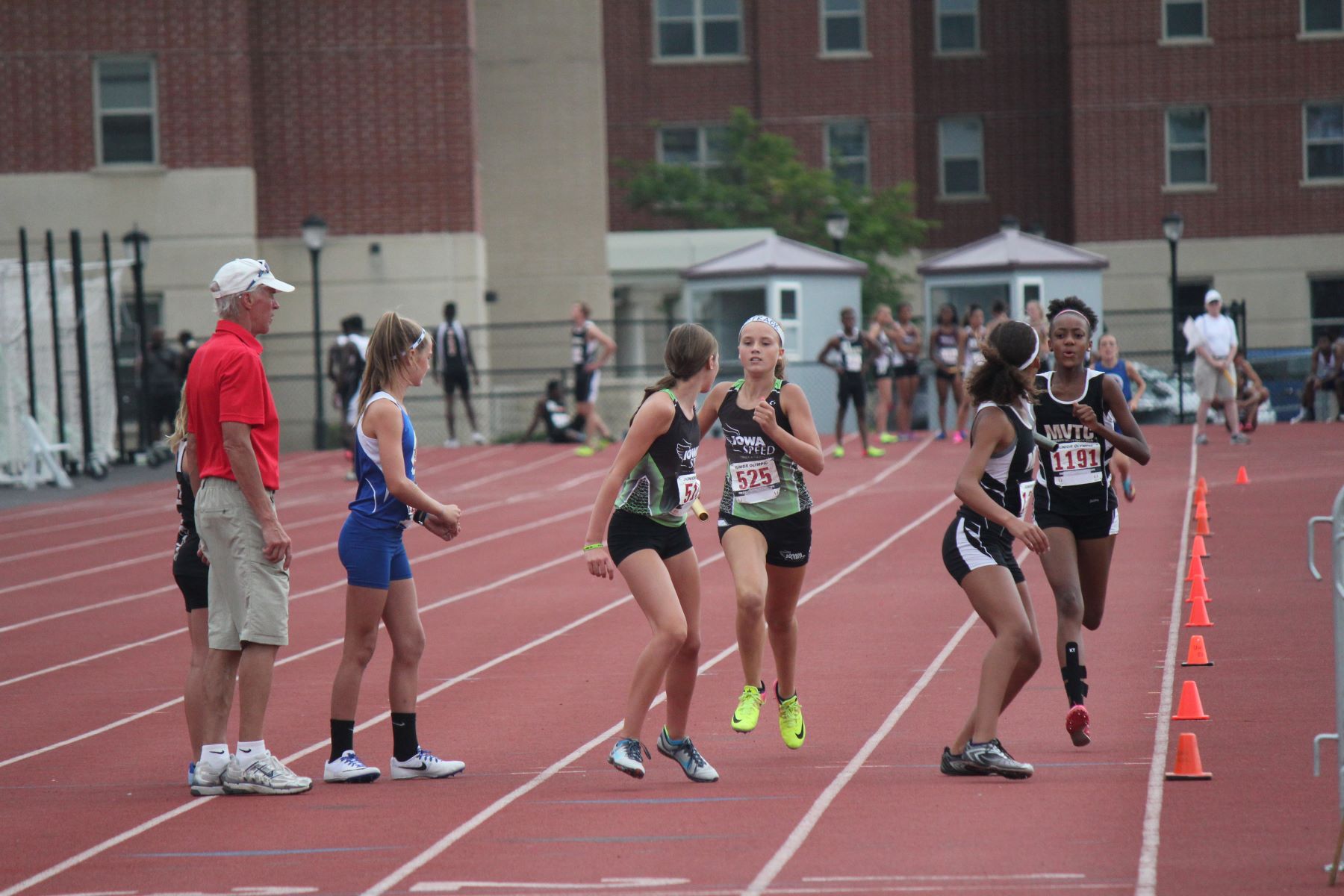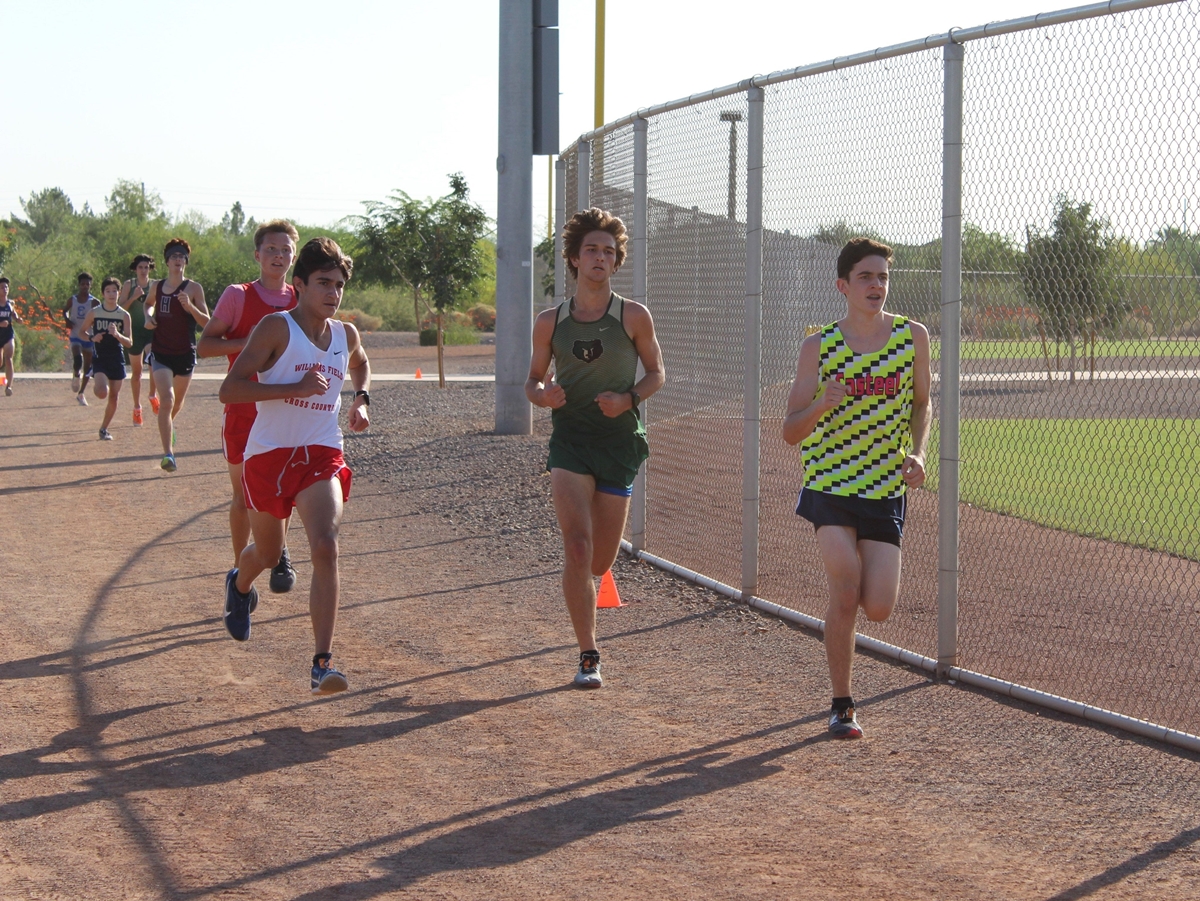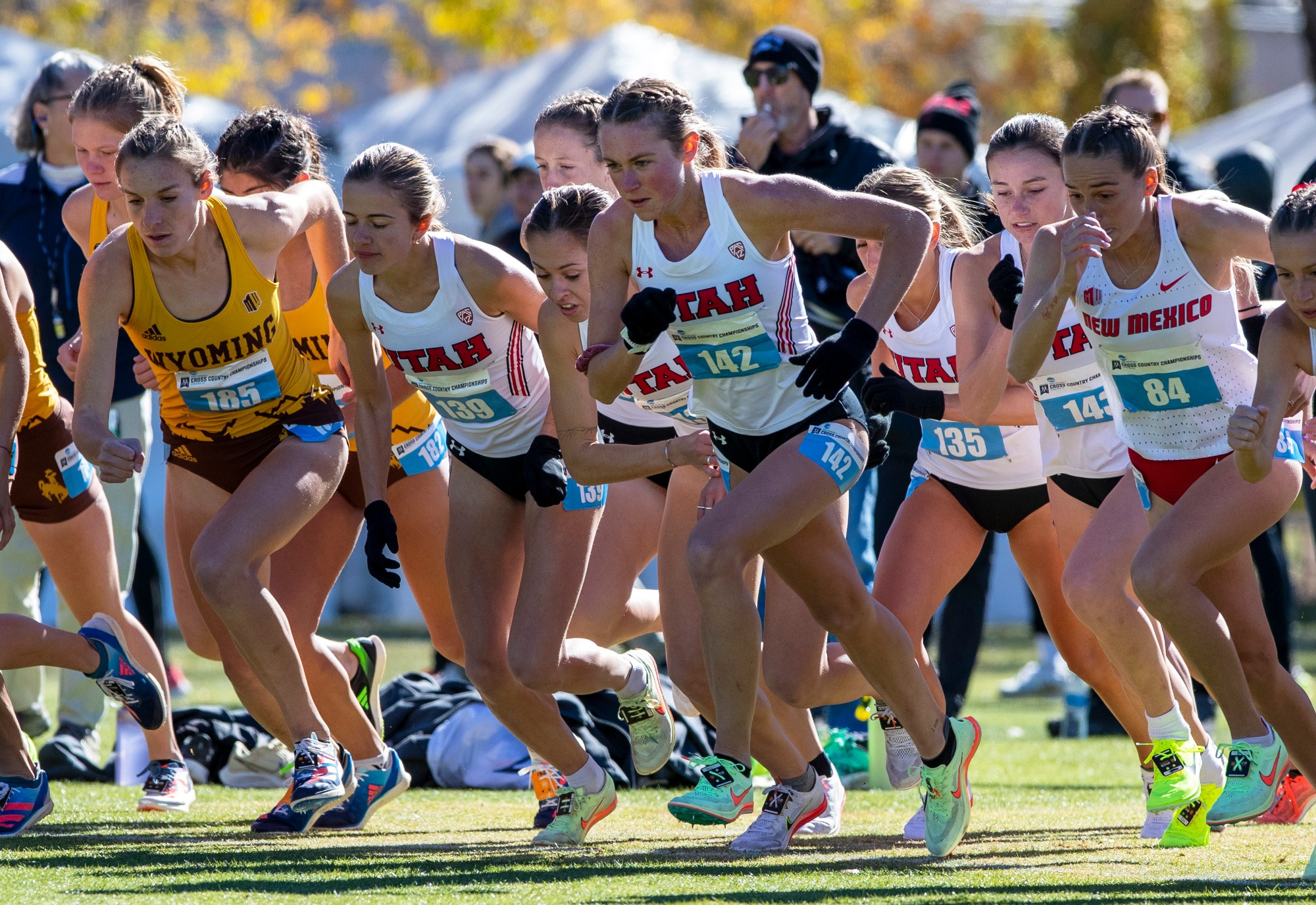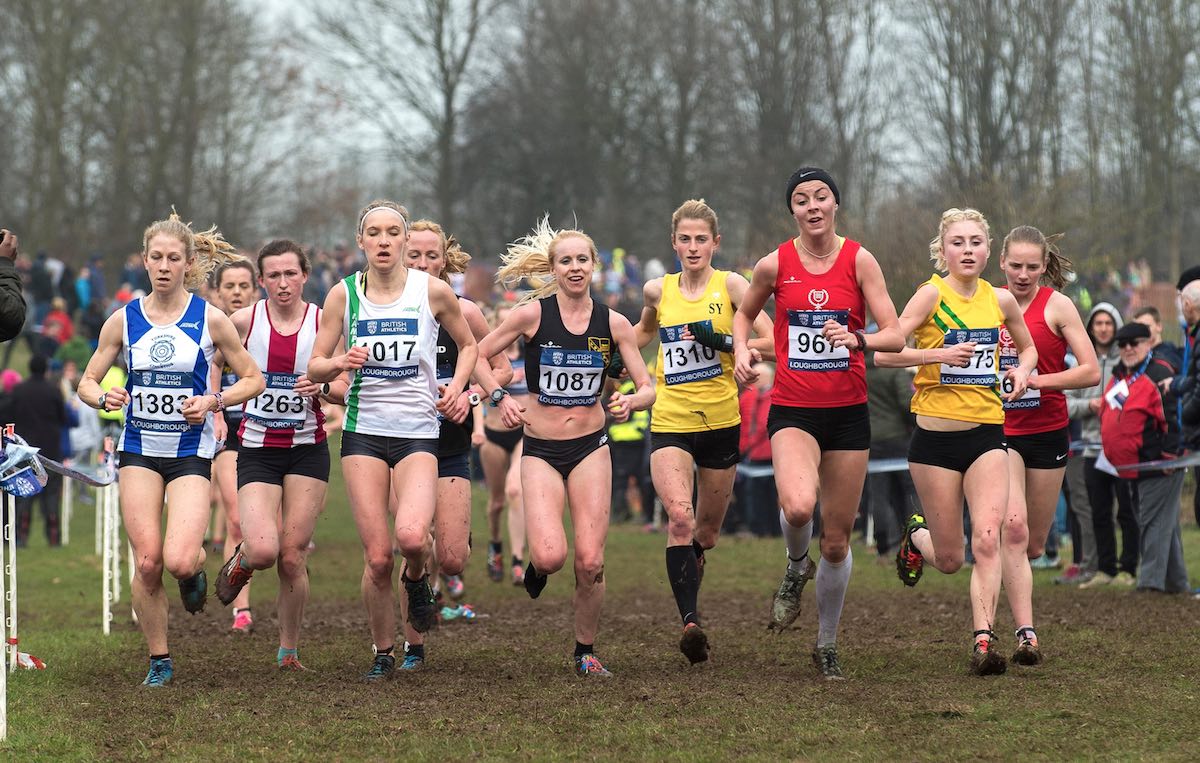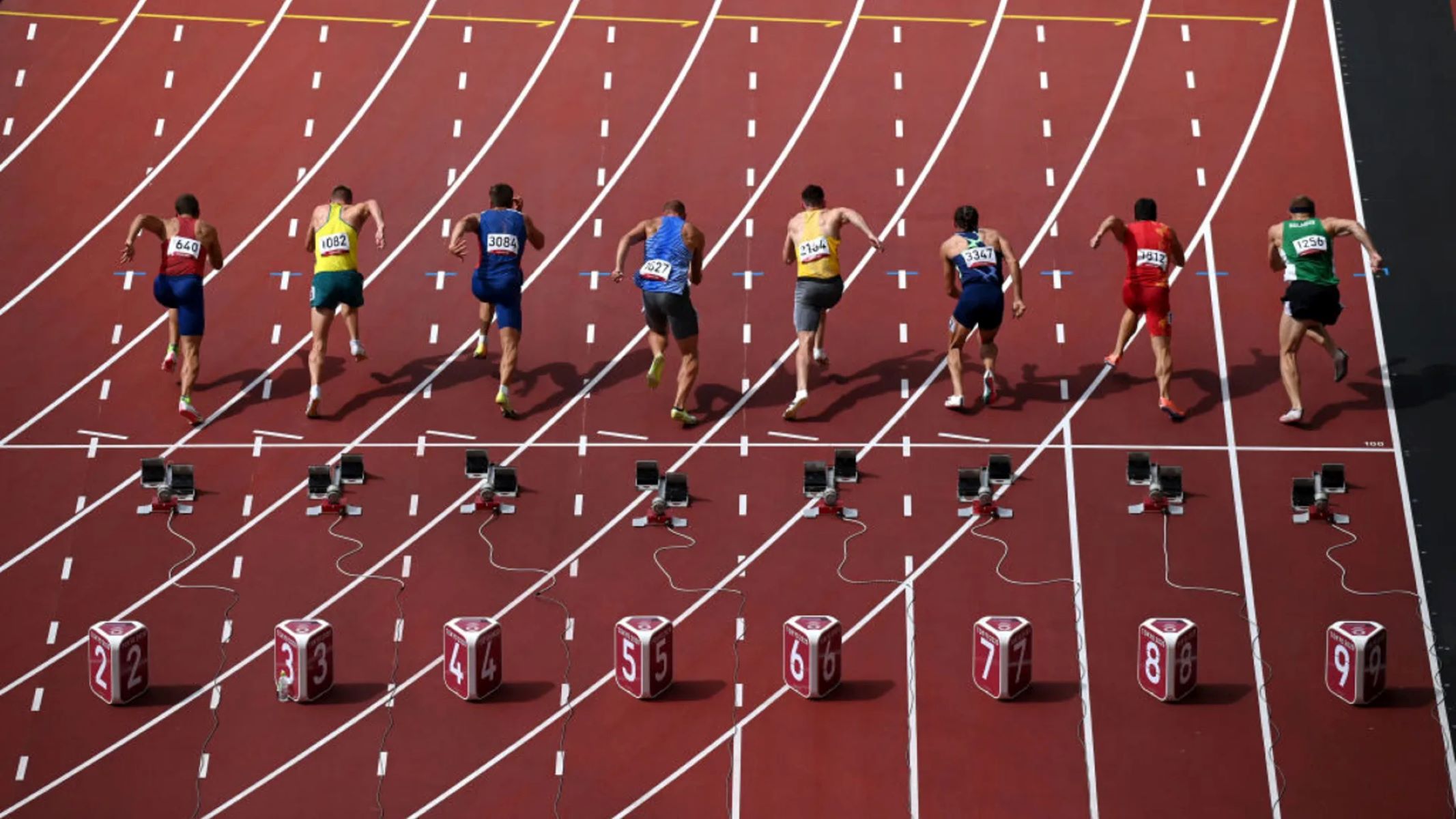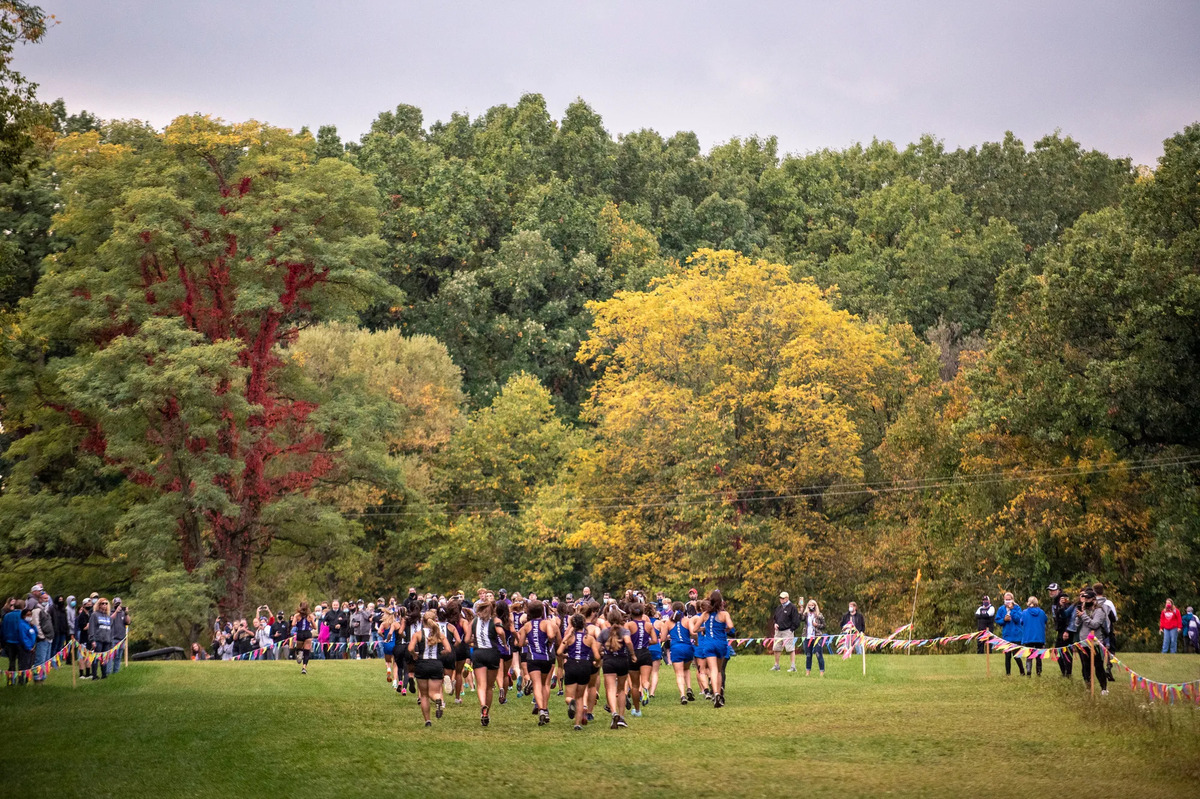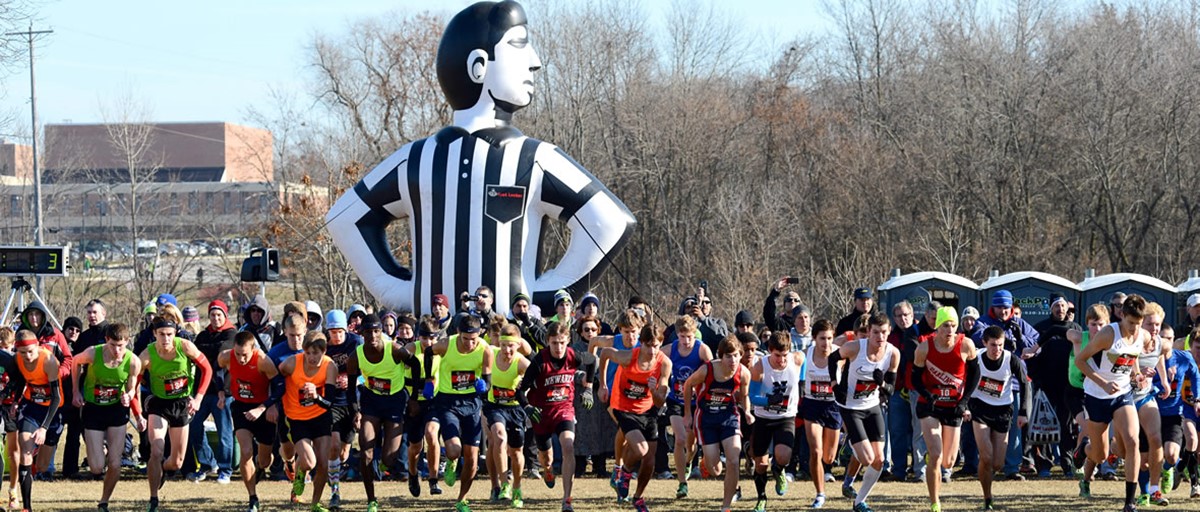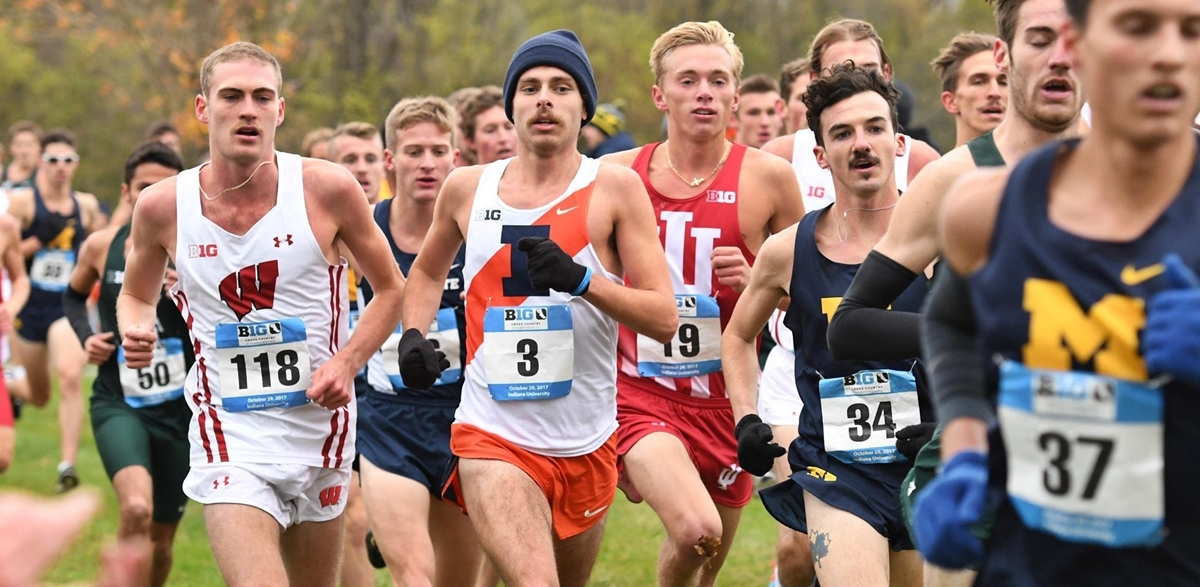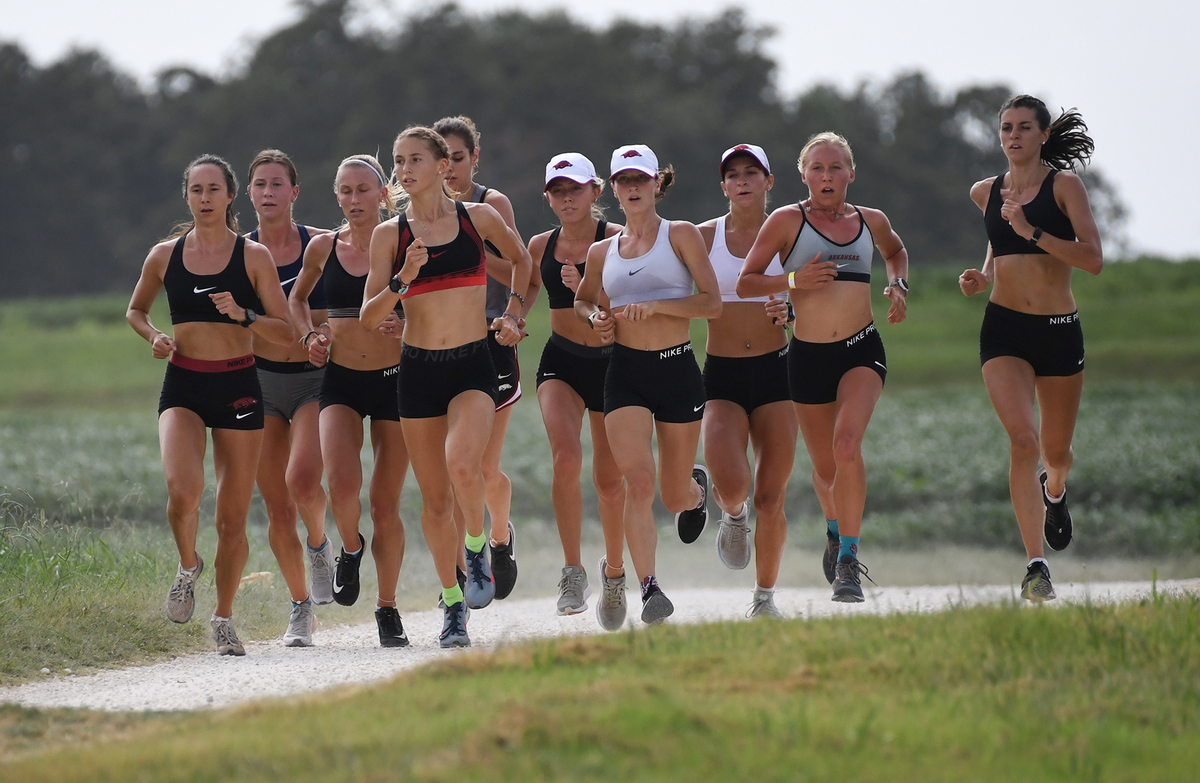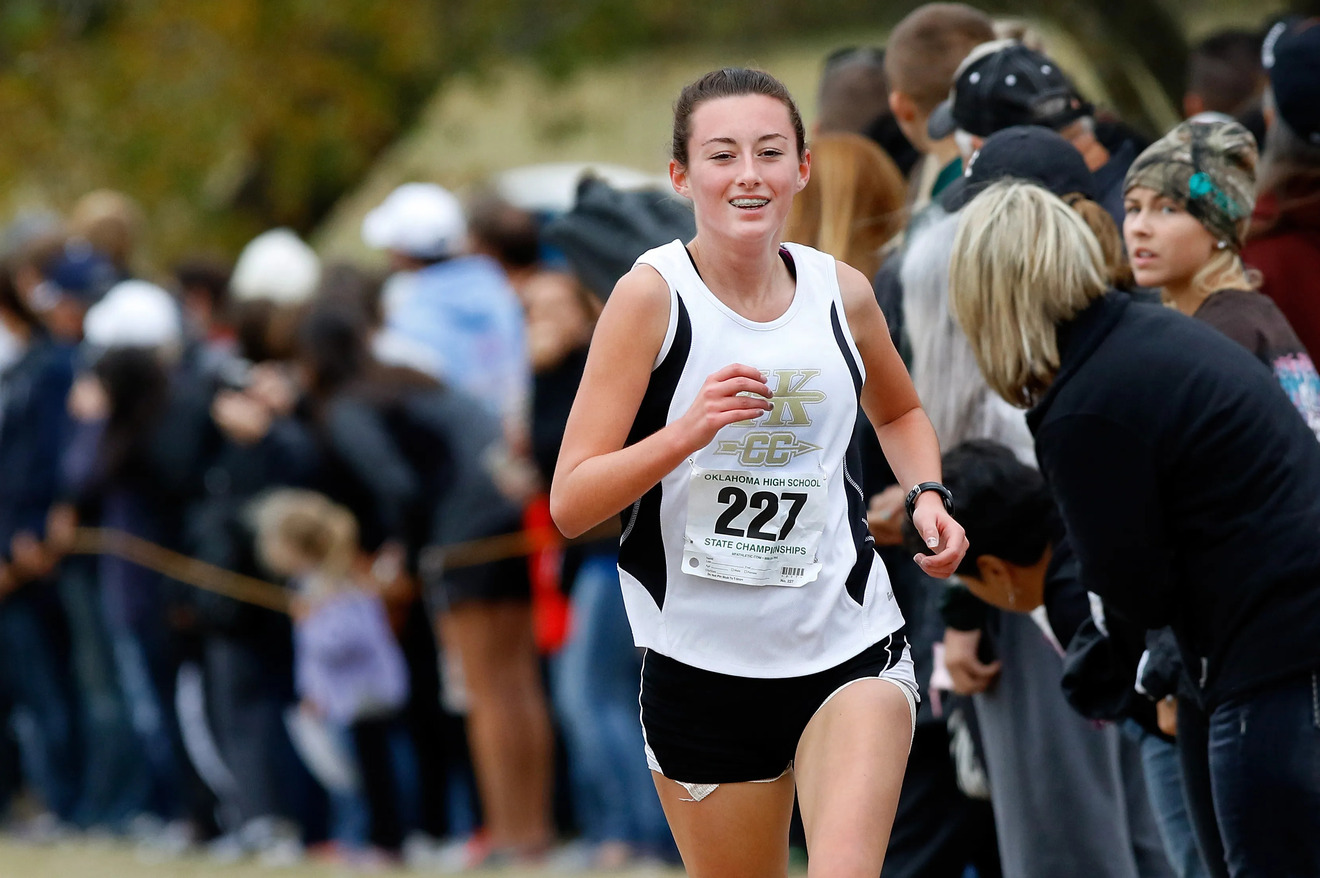Home>Misc>Featured>How To Coach Cross Country In Middle School
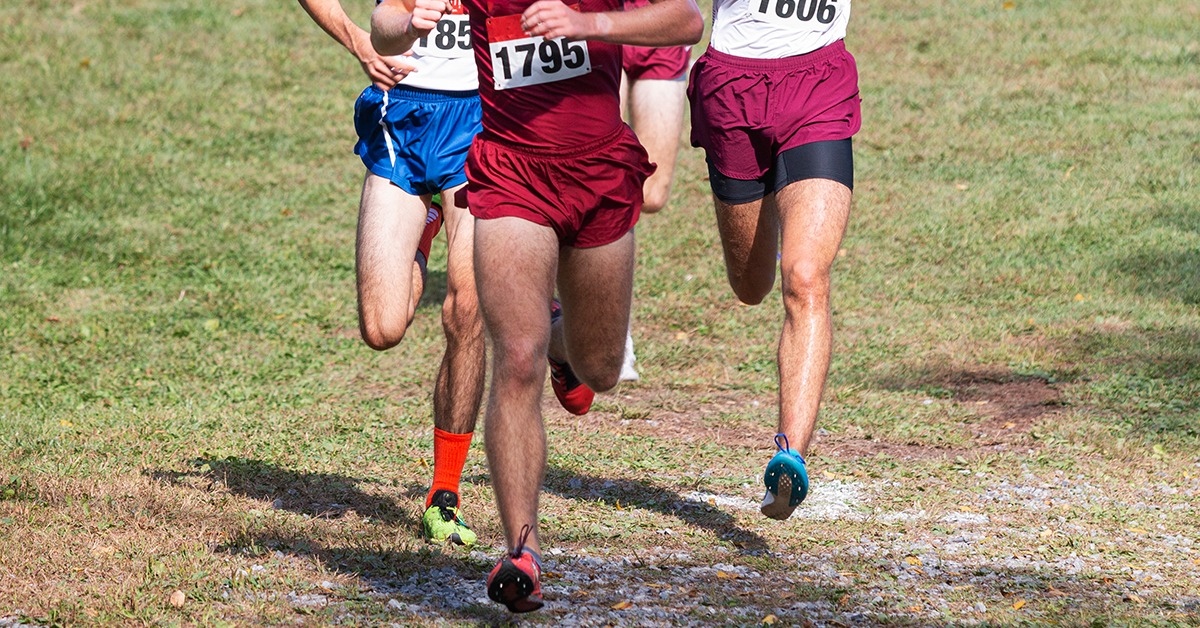

Featured
How To Coach Cross Country In Middle School
Modified: January 22, 2024
Learn how to coach cross country in middle school with our featured guide, packed with tips and strategies for success.
Introduction
Welcome to the exciting world of middle school cross country coaching! As a coach, you have the incredible opportunity to help young athletes discover their passion for running and develop important skills that will serve them well both on and off the field. This article will provide you with valuable insights and strategies on how to effectively coach cross country in a middle school setting.
Cross country running is a popular sport that combines physical endurance, mental strength, and teamwork. It involves racing on a variety of terrains, including grass, dirt trails, and sometimes even pavement. Unlike other track and field disciplines, cross country races are held over longer distances, typically ranging from 1.5 to 3.1 miles.
Coaching middle school cross country presents its own unique challenges and rewards. Middle schoolers are at a pivotal stage of their development, both physically and emotionally. They are eager to explore new opportunities, make friends, and discover their own strengths and abilities. As a coach, your role is not only to teach them the skills and techniques of running, but also to provide guidance, support, and encouragement as they navigate the ups and downs of training and competing.
Before diving into the specifics of coaching cross country, it’s important to establish a positive and inclusive team culture. Encourage your athletes to embrace the values of sportsmanship, respect, and perseverance. Foster an environment where everyone feels valued and supported, regardless of their skill level or speed.
As a coach, your primary goal is to help your athletes reach their full potential while instilling a love for running. This means creating a structured and well-planned training program, providing individualized instruction, and helping your athletes set and achieve their personal goals. It also means fostering a sense of camaraderie and teamwork, as cross country is both an individual and team sport.
Throughout this article, we will explore the key aspects of coaching middle school cross country, including setting up a team, planning practices, developing running techniques, monitoring progress, and preparing for meets. We will also discuss the importance of sportsmanship and how to handle injuries. By the end, you will have a comprehensive understanding of the fundamentals of coaching middle school cross country and be well-prepared to guide your athletes to success.
Understanding the Basics of Cross Country
In order to effectively coach cross country in a middle school setting, it’s important to have a solid understanding of the basics of the sport. Cross country running is a distance race that takes place on varying terrains, including grass, dirt, and sometimes pavement. Unlike track and field events, cross country races are typically held over longer distances, ranging from 1.5 to 3.1 miles.
One of the first things to understand about cross country is that it is both an individual and a team sport. Each athlete competes for their own personal time and improvement, but their individual scores also contribute to the overall team score. In a cross country meet, a team’s score is determined by adding up the places of its top five runners – the lower the score, the better the team’s performance. This team aspect adds an extra layer of motivation and camaraderie among the athletes.
Another important aspect is the courses on which cross country races are conducted. Courses can vary greatly, with hills, turns, and varying terrain presenting different challenges to the runners. Understanding the intricacies of different courses and knowing how to navigate different terrain can help your athletes better prepare for their races and develop effective strategies.
One of the unique aspects of cross country is that races are often conducted in different weather conditions. Athletes must learn to adapt to hot, cold, or rainy weather and adjust their strategy accordingly. It’s crucial for coaches to educate their athletes about the importance of proper attire, hydration, and pacing in different weather conditions to ensure optimal performance and prevent any potential health risks.
Additionally, middle school athletes are at various stages of physical and emotional development. It’s important to consider their individual abilities and limitations when developing training plans and setting goals. Some athletes may have limited experience in running, while others may have a natural talent. It’s important to create a supportive and inclusive environment where all athletes feel challenged and motivated to improve.
By understanding the basics of cross country, including the team aspect, the different courses and terrains, and the variation in weather conditions, you can provide your athletes with the necessary knowledge and guidance to excel in the sport. The next section will delve into the intricacies of setting up a middle school cross country team.
Setting Up a Middle School Cross Country Team
Starting a middle school cross country team is an exciting endeavor that can provide young athletes with valuable experiences and opportunities for growth. Here are some key steps to consider when setting up your team:
Gauge Interest: Begin by assessing the level of interest among students and parents. Use surveys or informational meetings to determine the potential number of athletes who would like to participate in cross country. This will help you gauge the resources and support needed to establish the team.
Secure Approval: Contact the school administration and obtain the necessary approval to start a cross country team. This may involve meeting certain requirements, such as having a qualified coach, access to facilities, and a commitment to follow the school’s athletic guidelines.
Recruit Coaches: Find coaches who are knowledgeable about distance running and passionate about working with middle school athletes. Look for individuals who can provide guidance, motivation, and support to your team.
Organize Parent Meetings: Host meetings to inform parents about the cross country program, its expectations, and the benefits of participation. Discuss practice schedules, meet attendance, team policies, and potential costs. Establish clear lines of communication and encourage parental involvement throughout the season.
Obtain Equipment: Acquire the necessary equipment for your team, including running shoes, uniforms, timing devices, and first aid supplies. Seek sponsorships or partnerships with local businesses to offset the costs and ensure that all athletes have access to the required gear.
Establish Practice Schedule: Determine the frequency and duration of practices, taking into consideration the students’ academic commitments and other extracurricular activities. Plan for a balance between conditioning, skills development, and rest to prevent burnout and injuries.
Create Training Plan: Develop a structured training plan that progressively builds endurance, speed, and running techniques. Consider the varying abilities and fitness levels of your athletes when designing workouts. Include a warm-up, stretching routine, distance runs, intervals, tempo runs, and recovery days in your training program.
Ensure Safety: Safety should be a top priority when setting up a cross country team. Identify and mitigate potential risks by scouting safe running routes, assessing course conditions, and establishing protocols for inclement weather. Educate athletes about proper hydration, nutrition, and injury prevention techniques.
Communicate with Athletes: Maintain regular communication with athletes, providing them with clear expectations, motivation, and feedback. Encourage open dialogue, address any concerns or questions they may have, and celebrate their achievements. Foster a positive and inclusive team culture where everyone feels valued and supported.
By following these steps, you can successfully set up a middle school cross country team and provide your athletes with a rewarding experience. The next section will focus on planning and organizing effective cross country practices.
Planning and Organizing Practices
Planning and organizing practices is a crucial aspect of coaching middle school cross country. It sets the foundation for your team’s progress and helps your athletes develop the necessary skills and endurance to excel in the sport. Here are some key considerations to keep in mind as you plan and organize your practices:
Develop a Practice Schedule: Establish a consistent schedule for practices, taking into account the availability of your athletes and any other extracurricular activities. Aim for regular, structured sessions that allow for both physical conditioning and skills development.
Variety of Workouts: Include a variety of workouts in your practice sessions to keep your athletes engaged and progressing. This can include intervals, tempo runs, hill repeats, fartlek training, and long distance runs. By incorporating different types of workouts, you can target different aspects of their training, such as speed, endurance, strength, and aerobic capacity.
Balance Conditioning and Skills: It’s important to strike a balance between conditioning exercises and skills development. While building endurance and stamina is crucial for cross country, don’t neglect the importance of proper running technique, form, and stride efficiency. Incorporate drills and exercises that focus on these skills to help improve your athletes’ performance and prevent injuries.
Consider Individual Abilities: Middle school athletes may have varying levels of experience and fitness. Tailor your workouts to accommodate their abilities and provide appropriate challenges. Offer modifications or progressions for athletes at different levels to ensure that everyone feels challenged and motivated to improve.
Warm-up and Cool-down Routines: Start each practice with a thorough warm-up routine that includes dynamic stretches and exercises to prepare the body for running. Finish with a cool-down that incorporates static stretches to promote flexibility and aid in recovery. Warming up and cooling down properly reduces the risk of injury and helps your athletes perform at their best.
Set Clear Objectives: Clearly communicate the objectives of each practice to your athletes. Let them know what skills or aspects they will be working on and what you expect them to achieve. This helps them stay focused and motivated throughout the session.
Use Time Efficiently: Middle school athletes are often limited in terms of practice time due to academic commitments. Maximize the effectiveness of your practices by utilizing time efficiently. Provide clear instructions, minimize downtime, and structure your workouts in a way that allows for maximum productivity.
Track Progress: Keep track of your athletes’ progress throughout the season. Record their times, distances, and any notable improvements. This not only allows you to monitor their development but also provides valuable feedback for setting goals and planning future workouts.
Flexibility and Adaptability: Be prepared to modify your practice plan if needed. Weather conditions, athlete fatigue, or unexpected events may require adjustments to your original schedule. Stay flexible and adapt accordingly to ensure a safe and productive practice session.
By effectively planning and organizing your cross country practices, you can create an environment that promotes skill development, physical conditioning, and team bonding. The next section will focus on warm-up and stretching routines to help prepare your athletes for training and races.
Warm-up and Stretching Routines
A proper warm-up and stretching routine is essential in preparing your middle school cross country athletes for training and races. It helps to gradually elevate their heart rate, increase blood flow to the muscles, and improve flexibility, reducing the risk of injuries. Here are some key components to include in your warm-up and stretching routine:
Dynamic Warm-up: Begin the warm-up with a series of dynamic exercises to activate the major muscle groups used in running. Incorporate movements such as high knees, butt kicks, leg swings, lunges, and arm circles. Dynamic warm-up exercises help to improve range of motion, loosen muscles, and prepare the body for more intense activity.
Cardiovascular Exercise: Follow the dynamic warm-up with light cardiovascular exercise, such as a short jog or brisk walk. This increases blood flow, raises body temperature, and further prepares the cardiovascular system for the upcoming workout or race.
Specific Stretching: After the initial warm-up, focus on specific stretching of the major muscle groups involved in running. This can include stretches for the calves, quadriceps, hamstrings, hip flexors, glutes, and hip rotators. Emphasize static stretching, holding each stretch for 15-30 seconds to enhance muscle flexibility and range of motion.
Pre-Run Drills: Incorporate pre-run drills that mimic running movements to further activate the muscles and reinforce proper running mechanics. This can include exercises such as high knees, A-skips, B-skips, grapevines, and bounding. These drills enhance muscle coordination, improve neuromuscular activation, and promote good running form.
Form Work: Use the warm-up period to work on running form and technique. Implement drills such as arm swings, leg swings, and stride adjustments to help your athletes develop efficient and biomechanically sound running mechanics.
Balance and Stability Exercises: Include exercises that target balance and stability, such as single-leg balance and ankle exercises. These exercises help to strengthen the muscles and joints involved in running, improving overall stability and reducing the risk of ankle sprains or other injuries.
Mental Preparation: Lastly, use the warm-up routine as an opportunity to mentally prepare your athletes for the upcoming training session or race. Encourage positive self-talk, visualization, and focus on their goals. Remind them of the importance of mental resilience and staying present during their runs.
By incorporating a comprehensive warm-up and stretching routine into your cross country practices, you not only reduce the risk of injuries but also enhance your athletes’ performance. It prepares their bodies for the physical demands of running, increases flexibility, and helps establish a positive mindset. The next section will focus on developing running techniques and strategies to help your athletes improve their performance.
Developing Running Techniques and Strategies
Developing proper running techniques and strategies is crucial for improving the performance of your middle school cross country athletes. By focusing on their form, biomechanics, and strategic approaches, you can help them become more efficient and effective runners. Here are some key considerations when developing running techniques and strategies:
Posture and Alignment: Emphasize the importance of maintaining a tall posture and proper alignment while running. Encourage your athletes to run with their head up, shoulders relaxed, and core engaged. This helps to optimize breathing, reduce tension, and prevent injuries.
Cadence and Stride Length: Teach your athletes about the optimal cadence (number of steps per minute) and stride length for efficient running. Strive for a cadence of around 180 steps per minute, as this promotes a quick turnover and reduces the risk of overstriding, which can lead to inefficient mechanics and increased risk of injury.
Foot Strike: Educate your athletes about different foot strike patterns, such as heel strike, midfoot strike, and forefoot strike. Help them find a foot strike that suits their natural biomechanics and promotes efficient energy transfer. Encourage a midfoot or forefoot strike, which tends to distribute impact forces more evenly and reduces the risk of injuries.
Leg Drive and Arm Swing: Focus on the coordination of leg drive and arm swing. Teach your athletes to generate power with their legs by driving their knees forward and pushing off from the ground. Emphasize a relaxed arm swing that moves in sync with the leg drive, helping to maintain balance and rhythm.
Hills and Downhill Running: Teach your athletes proper techniques for running uphill and downhill. When running uphill, encourage them to maintain a slightly shorter stride, lean forward slightly from the ankles, and engage their core and glutes for power. For downhill running, instruct them to lean back slightly, control their speed, and take shorter, quicker strides to reduce strain on the knees and quads.
Running Form Drills: Incorporate running form drills into your practices to reinforce fundamental techniques. These drills can include high knees, butt kicks, skipping, and strides. Running form drills help to improve running mechanics, enhance muscle coordination, and increase running efficiency.
Positive Pacing and Race Strategies: Guide your athletes on developing effective pacing and race strategies. Teach them the importance of starting at a controlled pace and conserving energy for later stages of the race. Encourage them to visualize and practice different race scenarios, such as surging past competitors or maintaining a steady pace throughout the race.
Mental Strategies: Help your athletes develop mental strategies and coping mechanisms to overcome challenges during races. Teach them techniques such as positive self-talk, visualization, and focusing on small achievable goals throughout the race. Remind them to stay mentally strong and maintain a positive mindset.
Video Analysis: Consider using video analysis during practice sessions to provide visual feedback to your athletes. Recording their running form and technique can help them identify areas for improvement and make necessary adjustments to enhance their performance.
By focusing on proper running techniques, developing efficient mechanics, and implementing race strategies, you can help your middle school cross country athletes reach their full potential. The next section will dive into creating training schedules to ensure systematic and progressive training.
Creating Training Schedules
A well-structured training schedule is essential for the systematic development and improvement of your middle school cross country athletes. By carefully planning and organizing their workouts, you can help them build their endurance, speed, and overall fitness over time. Here are some key considerations when creating training schedules:
Goal Setting: Begin by setting clear and achievable goals for both the individual athletes and the team as a whole. Goals can be based on performance targets, personal records, or specific race outcomes. Break down the goals into smaller milestones to track progress throughout the season.
Periodization: Implement a periodization approach to your training schedule by dividing it into distinct phases. This allows for proper progression and recovery, preventing overtraining and maximizing performance. Common phases include base training, build-up, peak, and recovery.
Build Endurance: Prioritize building endurance as the foundation of your training schedule. Include long runs at a comfortable pace, gradually increasing the distance over time. This helps improve cardiovascular fitness, aerobic capacity, and mental stamina.
Introduce Speed and Tempo Workouts: Incorporate speed workouts such as intervals, fartlek, and tempo runs. These workouts involve running at a faster pace for a specific distance or time, challenging the anaerobic threshold and enhancing lactate clearance. This improves speed, race pace, and overall fitness.
Strength and Conditioning: Dedicate time to strength and conditioning exercises to enhance overall athleticism and injury prevention. Include exercises that focus on core stability, leg strength, and functional movements. This can involve bodyweight exercises, resistance bands, or light weights. Aim for 2-3 strength training sessions per week.
Rest and Recovery: Plan rest days and recovery weeks into your training schedule to allow for rejuvenation and adaptation. Rest days are crucial for muscle repair and growth, while recovery weeks help prevent burnout and avoid overtraining. Balance challenging workouts with adequate recovery to ensure your athletes stay healthy and motivated.
Cross Training: Consider incorporating cross training activities such as swimming, cycling, or yoga into your athletes’ training schedule. This provides variety, reduces the risk of overuse injuries, and helps maintain overall fitness levels.
Mileage Progression: Gradually increase the weekly mileage over time to avoid sudden spikes in training load. Aim for a progressive and sensible increase in mileage to allow your athletes’ bodies to adapt and minimize the risk of overuse injuries.
Tapering: Implement a tapering period in the weeks leading up to important races. Reduce the training volume but maintain intensity to allow your athletes’ bodies to recover, ensuring they are fresh and ready for peak performance on race day.
Flexibility in the Schedule: Stay flexible with your training schedule to accommodate unexpected events, weather conditions, and individual athlete needs. Be prepared to adjust workouts or make alterations to the plan while keeping the overall training goal in mind.
Communication and Feedback: Regularly communicate with your athletes to gather feedback on their training sessions, progress, and any concerns they may have. This allows you to make necessary adjustments and provide support to help them reach their full potential.
By creating a well-balanced and progressive training schedule, you can optimize your middle school cross country athletes’ performance, improve their fitness levels, and help them achieve their goals. The next section will focus on the importance of monitoring and tracking their progress throughout the season.
Monitoring and Tracking Progress
Monitoring and tracking the progress of your middle school cross country athletes is crucial for assessing their development and making necessary adjustments to their training. It allows you to evaluate their performance, identify areas of improvement, and provide targeted feedback. Here are some key strategies for monitoring and tracking progress:
Record Data: Keep a record of your athletes’ training data, including distance, time, pace, and heart rate if applicable. This provides concrete information to track their progression and identify trends over time. Use a training log or digital tracking tools to easily capture and analyze data.
Regular Assessments: Conduct regular assessments to measure your athletes’ physical fitness, such as timed runs, interval tests, or time trials. These assessments serve as benchmarks to track improvement and determine their current levels of fitness.
Set Goals and Objectives: Collaborate with your athletes to set individual and team goals. Encourage them to identify specific targets for their race times, distances, or personal records. Regularly revisit these goals, track their progress, and celebrate milestones achieved.
Provide Feedback: Offer constructive feedback and guidance to your athletes based on their performance. Provide specific feedback on technique, pacing, and race strategies. Acknowledge their achievements and highlight areas for improvement to motivate and inspire them.
Use Performance Metrics: Utilize performance metrics, such as split times, heart rate zones, or power output if applicable. These metrics provide objective data to evaluate performance and help guide training adjustments as needed.
Monitor Recovery and Fatigue: Look for signs of overtraining, fatigue, or burnout in your athletes. Keep an eye on their energy levels, mood, and any recurring injuries. Adjust training volume and intensity accordingly to prevent overuse injuries and optimize performance.
Regular Communication: Maintain open lines of communication with your athletes. Regularly check in with them to gather feedback, address any concerns they may have, and provide support. Encourage them to share their experiences, successes, and challenges throughout the training process.
Celebrate Achievements: Recognize and celebrate your athletes’ progress and achievements. This can be done through verbal praise, acknowledging personal bests, or highlighting significant milestones at team gatherings or events. Celebrating their efforts boosts morale and motivation.
Periodic Reassessment: Periodically reassess your athletes’ skills, techniques, and fitness levels to track their growth. This provides an opportunity to evaluate their progress against their goals and adjust training plans accordingly.
Self-Assessment: Encourage your athletes to engage in self-assessment and reflection. This helps them become more aware of their strengths, weaknesses, and areas for improvement. Foster a growth mindset that promotes continuous learning and self-improvement.
By diligently monitoring and tracking your athletes’ progress, you can provide meaningful feedback, adjust training plans, and ensure they continue to develop and improve throughout the season. The next section will focus on building team spirit and motivation among your cross country athletes.
Building Team Spirit and Motivation
Building team spirit and motivation is essential for creating a positive and cohesive environment within your middle school cross country team. Fostering a sense of unity and camaraderie not only enhances the athletes’ experience but also improves their performance. Here are some strategies to build team spirit and motivation:
Team-Building Activities: Organize team-building activities to help your athletes bond and get to know each other. This can include group outings, team dinners, or non-running events that promote teamwork and camaraderie. Encourage open communication, collaboration, and support among team members.
Establish Team Goals: Set team goals that align with the collective aspirations of your athletes. Create a shared vision for the season and encourage athletes to work together towards achieving those goals. Emphasize the concept of team accomplishments rather than solely individual achievements.
Encourage Peer Support: Foster an environment where athletes support and uplift one another. Encourage experienced athletes to mentor and inspire their teammates. This not only builds team cohesion but also helps athletes improve by learning from each other’s strengths.
Celebrate Individual and Team Achievements: Recognize and celebrate both individual and team accomplishments. Highlight personal records, improved performances, acts of sportsmanship, and team victories. Recognizing and appreciating achievements boosts morale and motivates athletes to continue striving for success.
Communication and Feedback: Maintain open and effective communication with your athletes. Provide regular and constructive feedback on their progress, technique, and attitude. Encourage them to share their thoughts and concerns, and listen to their ideas and suggestions. Ensure that the lines of communication are open and supportive.
Positive Reinforcement: Use positive reinforcement to motivate and inspire your athletes. Provide praise and recognition for their hard work, dedication, and progress. Emphasize the importance of effort, resilience, and teamwork. Creating a positive and encouraging environment helps athletes feel valued and motivated to perform their best.
Team Challenges and Competitions: Organize friendly competitions or challenges within the team to keep motivation levels high. This can include time trials, relay races, or team-building exercises that encourage friendly competition and a healthy sense of rivalry. This fosters a sense of shared purpose and motivation to excel.
Engage in Community Service: Encourage your team to engage in community service activities that promote team bonding and a sense of purpose. Volunteering together for a local charity event or organizing a team fundraiser not only benefits the community but also strengthens the team’s unity and shared values.
Set Fun and Inclusive Team Traditions: Establish fun and inclusive team traditions that create a sense of belonging and excitement. This can include pre-race rituals, team cheers, or organizing team-building games. Encourage participation from all athletes and ensure that everyone feels included and valued.
Lead by Example: As the coach, lead by example and embody the values and behaviors that you want to see in your athletes. Show enthusiasm, dedication, and resilience. Model good sportsmanship and encourage a positive and supportive attitude among both athletes and coaches.
By implementing these strategies, you can foster team spirit, motivation, and a sense of belonging within your middle school cross country team. A unified and motivated team not only performs better on the field but also creates a rewarding and enjoyable experience for everyone involved. The next section will discuss the importance of teaching sportsmanship and values to your athletes.
Teaching Sportsmanship and Values
Teaching sportsmanship and values is an essential aspect of coaching middle school cross country. It goes beyond the physical aspects of the sport and focuses on character development, integrity, and respect. Instilling these values in your athletes not only shapes them as individuals but also contributes to a positive team culture. Here are some strategies for teaching sportsmanship and values:
Lead by Example: As a coach, exemplify the values of sportsmanship and display good sportsmanship in your own actions and interactions. Your athletes look up to you as a role model, and your behavior sets the tone for the entire team.
Pre-Race and Post-Race Etiquette: Teach your athletes how to conduct themselves before and after races. Emphasize the importance of showing respect to competitors, officials, and spectators. Encourage them to congratulate opponents, offer support, and demonstrate gratitude for the opportunity to compete.
Practice Good Race Behavior: Reinforce the importance of fair play during races. Discourage unsportsmanlike behavior such as blocking or impeding other runners, pushing, or intentionally hindering opponents. Teach your athletes to compete with integrity and follow race rules and regulations.
Focus on Effort and Improvement: Shift the emphasis from winning to personal effort, improvement, and character development. Teach your athletes to set personal goals and view success as their own progress and growth, rather than solely relying on comparisons to others.
Emphasize Teamwork: Help your athletes understand the importance of teamwork in cross country. Encourage them to support and cheer for their teammates during races, and emphasize that everyone’s contribution is vital to the team’s success. Foster a sense of unity and appreciation for each other’s efforts.
Encourage Supportive Behavior: Create an environment where athletes support and respect one another. Teach your athletes to encourage their teammates and provide words of encouragement during practices and races. Discourage negative comments or actions that belittle or demotivate others.
Promote Inclusivity: Embrace the diversity within your team and foster an inclusive environment where every athlete feels valued and supported. Promote friendship and mutual respect, encouraging athletes to build relationships and bridge gaps between different skill levels and backgrounds.
Teach Resilience in the Face of Adversity: Help your athletes develop resilience and a positive mindset. Encourage them to overcome setbacks, learn from failures, and bounce back from disappointments. Provide guidance on how to handle challenges, setbacks, and tough races with grace and determination.
Emphasize Gratitude and Humility: Teach your athletes to be gracious, humble, and grateful for their abilities, opportunities, and achievements. Encourage them to acknowledge the efforts of others and remain humble in both victory and defeat.
Reflect and Discuss: Engage your team in regular discussions and reflections on sportsmanship and values. Create opportunities for athletes to share their thoughts, experiences, and insights on these topics. Encourage open dialogue, active listening, and respectful communication.
By teaching sportsmanship and values, you not only help your athletes become better cross country runners but also shape them into well-rounded individuals. Emphasizing character development and instilling positive values creates a team culture built on respect, integrity, and unity. The next section will focus on the preparations needed for cross country meets.
Preparing for Cross Country Meets
Preparing for cross country meets involves careful planning and preparation to ensure your athletes are ready to perform at their best. It’s important to establish a routine, set goals, and create an environment that fosters confidence and readiness. Here are some key strategies for preparing your middle school cross country team for meets:
Create a Meet Schedule: Develop a meet schedule that outlines the dates, locations, and distances of upcoming races. Share this schedule with your athletes and their families well in advance, allowing everyone to plan accordingly.
Course Familiarization: Familiarize your athletes with the race course before the meet, if possible. If the course is accessible, organize practice sessions or walkthroughs on the course. This helps athletes mentally prepare and develop race strategies based on the terrain and its challenges.
Set Target Goals: Collaborate with your athletes to set target goals for each meet. Encourage goal setting based on individual and team performances. Goals may vary, including personal best times, improved placings, or achieving specific team scores.
Establish Pre-Race Routine: Develop a pre-race routine to help athletes prepare mentally and physically. This routine may include dynamic warm-up exercises, visualization techniques, mental preparation, and a team gathering to build camaraderie and focus.
Visualize Success: Encourage your athletes to visualize success and mentally rehearse their race plan. Teach them to imagine executing their strategy, feeling strong, and crossing the finish line with a sense of accomplishment. Visualization can boost confidence and performance on race day.
Race Strategy: Work with your athletes to develop race strategies that suit their abilities and the specific course characteristics. Discuss pacing, starting positions, passing strategies, and potential challenges they may encounter.
Maintain Nutrition and Hydration: Ensure that your athletes understand the importance of proper nutrition and hydration leading up to and during meets. Encourage them to fuel their bodies with balanced meals, stay hydrated, and consume snacks or light meals before races to optimize performance.
Get Sufficient Rest: Emphasize the importance of getting sufficient rest before race days. Encourage your athletes to establish consistent sleep patterns and ensure they are well-rested to perform at their best.
Pack Essentials: Instruct your athletes to pack all necessary items the night before the meet. This may include running shoes, suitable clothing, bib numbers, team uniforms, water bottles, snacks, sunscreen, and any required meet-specific equipment. Double-check the meet regulations and ensure all athletes are in compliance with the rules.
Encourage Positive Mindset: Promote a positive and focused mindset among your athletes. Remind them to stay confident, embrace challenges, and trust their training. Encourage supportive and encouraging team communication, which boosts morale and instills a sense of readiness.
Provide Encouragement and Support: Be present and accessible for your athletes on race days. Offer words of encouragement, support, and reassurance before, during, and after their races. Your presence and positive energy can have a significant impact on their confidence and performance.
Post-Race Reflection: Engage your athletes in a post-race reflection and analysis session. Discuss what worked well, areas for improvement, and celebrate individual and team achievements. Use this as a learning opportunity to make adjustments and identify areas to focus on in future training sessions and meets.
By implementing these strategies, you can help your middle school cross country athletes feel prepared, confident, and focused on race days. The next section will address the importance of handling injuries and preventing accidents in a cross country setting.
Handling Injuries and Preventing Accidents
When coaching middle school cross country, it is important to prioritize the safety and well-being of your athletes. Handling injuries and preventing accidents are critical aspects of ensuring a positive and healthy experience for your team. Here are some strategies to effectively handle injuries and prevent accidents:
Create a Safe Training Environment: Provide a safe training environment by inspecting the running routes and practice areas for potential hazards such as uneven surfaces, potholes, or low visibility areas. Ensure that the practice area is well-lit and properly maintained.
Teach Proper Warm-up and Cool-down Techniques: Emphasize the importance of warm-up and cool-down routines to your athletes. Proper warm-up exercises increase blood flow to the muscles and decrease the risk of strains and sprains, while cool-down exercises help with recovery.
Incorporate Strength and Conditioning Exercises: Include regular strength and conditioning exercises in your training program to develop strong muscles, joints, and connective tissues. This helps to reduce the risk of injuries, as stronger muscles provide better support and stability.
Encourage Proper Technique: Teach your athletes proper running form, including foot strike, posture, and arm swing. Emphasize the importance of maintaining good running mechanics to minimize the risk of overuse injuries.
Monitor Athletes’ Training Load: Keep track of your athletes’ training load and ensure that they are not overtraining. Gradually increase the intensity and volume of their training, allowing adequate recovery time between workouts. Be aware of signs of fatigue, excessive soreness, or persistent pain, and adjust the training schedule if needed.
Educate Athletes on Nutrition and Hydration: Provide guidance on proper nutrition and hydration practices. Teach your athletes about the importance of staying adequately hydrated and fueling their bodies with nutritious meals and snacks to support their performance and recovery.
Implement Rest and Recovery Days: Schedule regular rest and recovery days to allow your athletes’ bodies to heal and rebuild. Rest days are essential for preventing overuse injuries and mental burnout. Encourage athletes to listen to their bodies and not push through excessive fatigue or pain.
Encourage Athletes to Speak Up: Create an open and supportive environment where athletes feel comfortable speaking up about any pain, discomfort, or concerns they may have. Encourage them to report injuries or potential issues promptly, so they can be properly addressed and managed.
Develop an Emergency Action Plan: Establish an emergency action plan in case of serious injuries or accidents. Ensure that all coaches, staff, and athletes are familiar with the plan and know who to contact for medical assistance. Regularly review and update the plan as needed.
Partner with Medical Professionals: Establish relationships with medical professionals, such as athletic trainers or sports medicine physicians, who can provide expertise and support in managing and treating injuries. Consult with these professionals for guidance on injury prevention and rehabilitation strategies.
Promote Sportsmanship and Fair Play: Teach your athletes the importance of fair play and good sportsmanship. Discourage aggressive or reckless behavior during practices and races that could lead to accidents or injuries. Emphasize the values of respect, teamwork, and consideration for others.
By implementing these strategies, you can minimize the risk of injuries and accidents within your middle school cross country team. Prioritizing safety, proper training techniques, and injury prevention ultimately contributes to the overall well-being and success of your athletes. The next section will focus on evaluating and recognizing athlete performance.
Evaluating and Recognizing Athlete Performance
Evaluating and recognizing athlete performance is a key aspect of coaching middle school cross country. It allows you to gauge progress, identify areas for improvement, and provide meaningful feedback to your athletes. Here are some strategies for effectively evaluating and recognizing athlete performance:
Objective Performance Metrics: Utilize objective performance metrics, such as race times, distance covered, or finishing places, to assess athlete performance. These metrics provide tangible evidence of progress and allow you to track improvements over time.
Individualized Feedback: Provide individualized feedback to each athlete to help them understand their strengths and areas for growth. Focus on specific aspects of their running technique, pacing, race strategy, and overall performance. Offer constructive criticism and guidance on how they can further improve.
Goal Achievement: Evaluate how well athletes are meeting their individual and team goals. Recognize and acknowledge athletes who have achieved their personal best times, improved their performance, or met specific milestones. Celebrate their successes and emphasize the importance of setting and striving for goals.
Recognize Effort and Commitment: Acknowledge and appreciate the effort, dedication, and commitment demonstrated by your athletes. Recognize those who consistently show up to practice, give their best effort, and support their teammates. Highlight their contributions to the team and value their commitment.
Personal Improvement: Evaluate an athlete’s progress by comparing their current performance to their past performances. Recognize and celebrate the progress they have made, even if it may not result in top placements. Emphasize the importance of personal improvement and recognizing that each athlete’s journey is unique.
Team Performance: Assess the team’s performance as a whole. Recognize the collective effort, improvement, and teamwork that contributed to the overall team performance. Highlight the importance of supporting and uplifting one another, as cross country is both an individual and team sport.
Award Systems: Implement an award system that recognizes outstanding achievements or contributions. This can include weekly or monthly awards for the most improved athlete, best effort, or sportsmanship. Awards can also be given at the end of the season to recognize exceptional performances or outstanding team spirit.
Celebrate Personal Bests: Celebrate athletes who achieve personal bests or significant improvements in their performances. Recognize the hard work, determination, and progress they have made. Encourage athletes to take pride in their individual accomplishments and use them as motivation for future races.
Encourage Peer Recognition: Foster an environment where athletes recognize and appreciate their teammates’ performances. Encourage athletes to support and celebrate each other’s successes. Create opportunities for peer recognition and team bonding to reinforce a positive team culture.
Track Record and Progress: Maintain a record of each athlete’s progress over the course of the season. Keep track of their race results, personal records, and notable achievements. This record helps athletes visualize their progress and serves as a source of motivation and pride.
By effectively evaluating and recognizing athlete performance, you empower your middle school cross country athletes to strive for continuous improvement. Celebrating their achievements, acknowledging their efforts, and providing targeted feedback fosters a positive and motivated team culture. The next section will discuss the importance of handling injuries and preventing accidents in a cross country setting.
Conclusion
Coaching middle school cross country is a rewarding and impactful role that allows you to guide young athletes in their journey towards physical fitness, personal growth, and teamwork. By understanding the basics of cross country, setting up a team, planning practices, developing running techniques, monitoring progress, and fostering a positive team culture, you can create an environment where your athletes thrive.
Building team spirit and motivation, teaching sportsmanship and values, and guiding your athletes through the preparations for cross country meets are integral to their success. Handling injuries and preventing accidents ensures their safety, while evaluating and recognizing athlete performance provides valuable feedback and encourages ongoing improvement.
Remember, coaching is not just about building athletic abilities; it is about nurturing character, resilience, and a love for the sport. Encourage your athletes to embrace challenges, learn from setbacks, and celebrate their achievements. With your guidance and support, your middle school cross country team can develop not only as talented runners but also as well-rounded individuals.
So, lace up your shoes, design effective training programs, and lead your athletes towards their full potential. Make every practice and meet an opportunity for growth, camaraderie, and joy. As a middle school cross country coach, you have the power to make a lasting impact on the lives of your athletes, inspiring them to become lifelong runners and embody the values of sportsmanship and perseverance.
